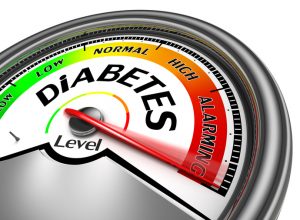I was diagnosed with type 1 diabetes approximately ten years ago when I was in my mid-40s. Yes, you can have Type 1 diabetes later in life. Many are confused about the difference between Type 1 and Type 2 diabetes. Type 1 diabetes is when the body completely stops producing any insulin, and the person must take daily insulin injections to survive. Type 2 diabetes is when the body doesn’t produce enough insulin and or is unable to use the insulin properly (insulin resistant).
The discovery of my diabetes came through a routine blood test which showed my blood sugar level was high at 246. Normal blood sugar levels are between 72 – 108. At the time, I didn’t know what the signs of potential diabetes were, but in hindsight, I was experiencing classic symptoms which I will discuss in a moment.
On New Year’s Day 2017, I began to wonder if my son of 16 years old had diabetes. Over the past ten days, I had noticed him drinking a lot of water and urinating quite a bit. However, I didn’t see a consistent pattern or any one single incidence that raised a red flag until New Year’s Day. That morning my son had pancakes and syrup for breakfast. Later that day, we met my brother for brunch, and my son had another full plate of pancakes along with maple syrup. At home that evening we were playing cards when over a 15-minute span he went to the restroom three times and was consuming a couple of glasses of water. I took his blood sugar, and the meter read “over 600 seek medical assistance.” One, I was in shock and too I wanted to test again to be sure. The second test produced the same results. So, I decided to check myself to make sure the meter was working properly, which it was.
My wife and I immediately took him to the emergency room where they confirmed my worst fears; my son was a diabetic. His blood sugar count was at 729, which is a very dangerous level. Through IV of fluids and insulin, they were able to reduce his blood sugar. They immediately transported him to Children’s Hospital where he was admitted and monitored for 24 hours. During this time, his blood sugar reduced to normal levels and as a family, we had a crash course in diabetes education.
By knowing the signs of diabetes, we were able to avoid my son going into diabetic ketoacidosis, which is a severe situation that can lead to a coma or death. According to the American Diabetes Association, diabetic ketoacidosis, a.k.a. DKA is “when your cells don’t get the glucose they need for energy, and your body begins to burn fat for energy, which contains ketones. Ketones are chemicals that the body creates when it breaks down fat to use for energy. The body does this when it doesn’t have enough insulin to use the glucose, the body’s usual source of energy. When ketones build up in the blood, they make it more acidic. High level of ketones can poison the body.”
Here’s a list of symptoms that could point to diabetes:
- being very thirsty,
- frequent urination,
- weight loss,
- increased hunger,
- blurry vision,
- irritability,
- tingling or numbness in the hands or feet,
- frequent skin, bladder or gum infections,
- wounds that won’t heal, and
- extreme unexplained fatigue.
Know the symptoms and if you see yourself or anybody in your family experiencing these take them to their doctor, urgent care or emergency room immediately.
There is another reason why I am writing this blog. A friend of mine a couple of months ago had a daughter who was diagnosed with Type 1 diabetes. She is a little younger than my son. She was demonstrating some classic signs – being very thirsty, frequent urination, and extreme unexplained fatigue. The family did not know the symptoms of diabetes. They did, however, take her to an urgent care facility who immediately transferred her to Children’s Hospital upon reviewing her blood work.
Diabetes is a chronic illness that can be managed and allow one to lead a very healthy and fulfilling life. Here are a few celebrities that have Type 1 diabetes: Halle Berry, Nick Jonas, author Anne Rice, Supreme Court Justice Sonia Sotomayor and NFL quarterback Jay Cutler. I have my good days and bad days, but I don’t let my diabetes stand in the way because I manage it every day.
Please, be aware of the symptoms and don’t ignore or discount them. The endocrinology team at Children’s Hospital said that we were very lucky we caught this early because too often children are admitted with onset diabetes that is experiencing DKA. Don’t be that statistic.
Below, I are links to a variety of websites that discuss diabetes. Please read.
- Diabetes Research Institute Foundation: https://www.diabetesresearch.org/diabetes-fact-sheet?gclid=CjwKEAiArfDBRDeyOybg8jd2U4SJAAoE5XqO9AyUiRwdK1Ak5V3MusQ01EqO1CwVZSw9muSuxcArxoCDdPw_wcB
- Joslin Diabetes Center: http://www.joslin.org/info/general_diabetes_facts_and_information.html
- American Diabetes Association: http://www.diabetes.org
- Juvenile Diabetes Foundation: http://www.jdrf.org

